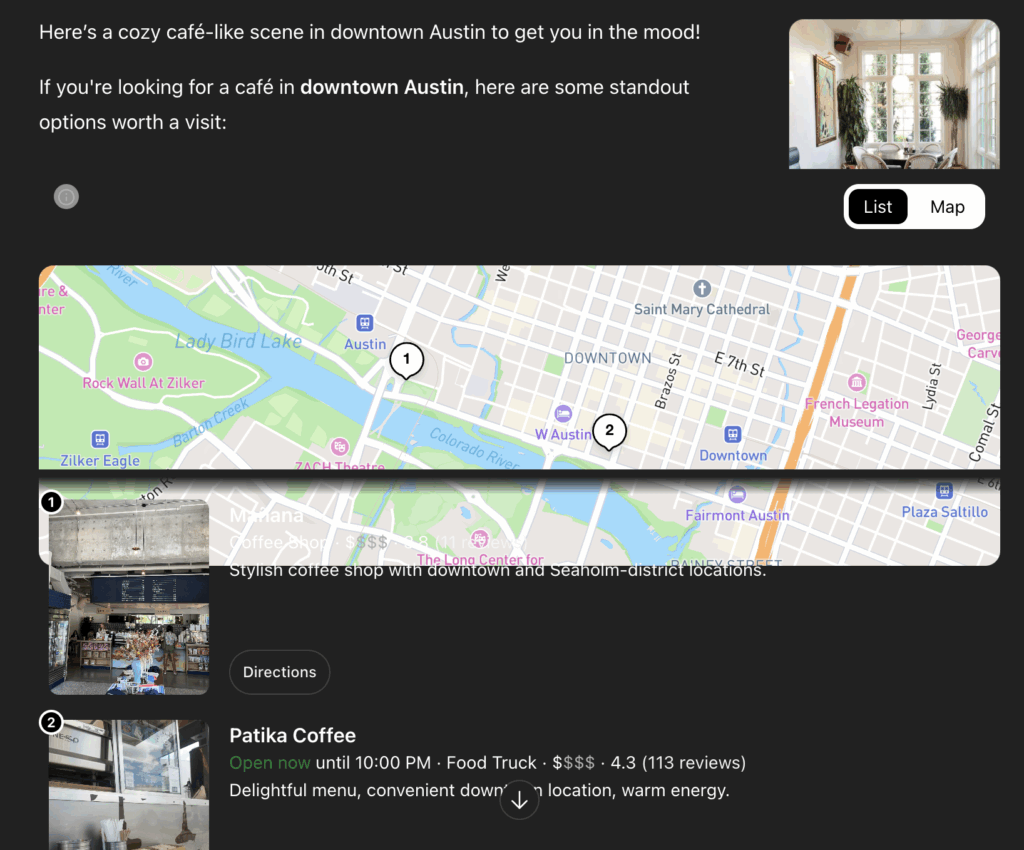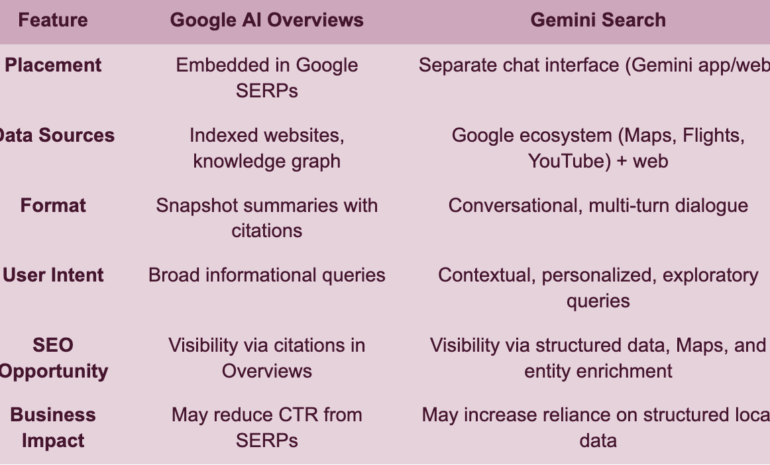The rise of Large Language Models (LLMs) like GPT-4, Gemini, and Claude isn’t just changing how people search but reshaping how location data is understood, ranked, and presented. This shift is more than a trend. It’s a structural change in how digital visibility works.
In traditional SEO, local search engines relied heavily on structured fields, keyword relevance, and backlinks. LLM-powered discovery engines go further, understanding geospatial relationships between entities, interpreting context from natural language, and connecting data points across multiple platforms.
To understand how LLMs process geospatial data is the foundation for building AI-ready SEO strategies.
1. From Coordinates to Context
When humans think of a location, we associate it with meaning, a café in downtown Austin is different from one in a suburban shopping plaza. LLMs aim to replicate this contextual understanding.

Here’s how it works at a technical level:
- Geocoding: Raw location inputs (like “123 Main St”) are converted into precise latitude and longitude coordinates.
- Entity Linking: The model maps those coordinates to a recognized place or business entity in its knowledge graph.
- Contextual Layering: Metadata like business category, hours, reviews, and historical trends is layered to give meaning to the location.
For SaaS SEO platforms, this means data precision is non-negotiable. A single mismatch in coordinates or inconsistent NAP (Name, Address, Phone) data can mislead the model and reduce discovery opportunities.
2. Geospatial Embeddings in LLMs
Modern LLMs use embedding vectors to represent information. For geospatial data, embeddings allow the model to understand not just the business name but where it exists in relation to other entities.
Example:
If a user asks, “Find the top coffee shops near Austin Convention Center”, the LLM processes:
- Spatial Proximity: Ranking by physical distance.
- Semantic Relevance: Filtering for entities classified as “coffee shops.”
- Popularity Signals: Weighing reviews, check-ins, and content mentions.
As a SaaS SEO provider, integrating embedding-aware APIs, such as those that index business data with geospatial coordinates will make your multi-location clients more “findable” in AI-driven local search.
3. Data Sources and Ingestion
LLMs don’t crawl the web in real time like Google’s search engine. They rely on:
- Pre-training corpora that contains public listings, maps, and datasets.
- Third-party APIs for mapping, business directories and review platforms.
- Proprietary feeds from trusted publishers.
If your client’s location data doesn’t appear in these high-trust sources, it risks being absent or outdated in AI responses.
This is why distributing your data to AI-indexed publishers and ensuring format compliance is a competitive advantage.
4. The Role of Natural Language Queries
Unlike old-school search where keywords were explicit, LLMs interpret conversational intent.
- “Where can I get vegan pizza near me?” triggers dietary preference filtering.
- “Best late-night diners in San Diego” triggers time-based availability filtering.
For multi-location brands, rich business profiles with tags like cuisine type, service hours, and accessibility features directly influence how the model ranks and selects results.
5. Challenges in Geospatial AI Understanding
Even the most advanced LLMs face common challenges like:
- Boundary Ambiguities: Cities with overlapping postal zones.
- Dynamic Changes: Store relocations, closures, or temporary events.
- Sparse Data Regions: Rural or emerging markets with limited digital coverage.
But as a SEO provider you can mitigate this by automating listing updates across platforms, maintaining change logs and historical references and partnering with APIs that push verified updates into AI-indexed datasets.
6. Action Plan for SaaS SEO Providers
To prepare your multi-location clients for LLM-driven local search:
- Standardize and enrich all NAP data with precise geo-coordinates.
- Use geospatial APIs that integrate with AI-indexed publishers.
- Embed structured metadata (e.g., schema.org GeoCoordinates) in site code.
- Monitor AI search outputs to identify and correct representation gaps.
LLMs are redefining how local discovery works, shifting the competitive edge toward businesses whose location data is precise, enriched, and widely distributed.
For SaaS SEO providers, mastering geospatial AI it’s the difference between being featured in the next wave of AI search results or being invisible.
If your multi-location brand clients want to future-proof their visibility in AI search engines, geospatial intelligence needs to be a core pillar of your SEO strategy.


